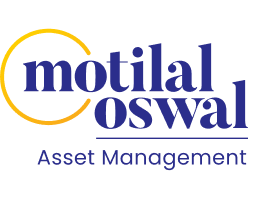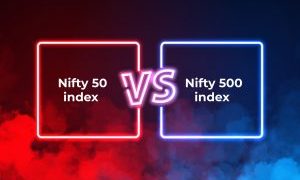Investing wisely is a journey that requires thorough understanding and strategic planning. Open-ended mutual funds, with their unique features and benefits, have become increasingly popular among investors seeking flexibility, diversification, and professional management. In this comprehensive guide, we will delve into the world of open-ended mutual funds, leaving no stone unturned. We will explore how they work, uncover the tax benefits they offer, determine who stands to gain the most from investing in them, dissect the associated risks, and provide a step-by-step guide on how to make the most of these financial instruments.
What is Open-Ended Mutual Funds?
Open-ended mutual funds represent a flexible and versatile investment option. Unlike closed-ended funds, which have a fixed number of units and trade on stock exchanges, open-ended funds operate continuously. They issue and redeem units directly with investors, based on the Net Asset Value (NAV) of the fund.
How Open-Ended Mutual Funds Work?
Continuous Trading:
Open-ended funds allow investors to buy or sell units at any time. This liquidity feature is one of their primary advantages, enabling investors to enter or exit the fund whenever they desire. Transactions occur directly with the fund company, making the process straightforward.
NAV Calculation:
The Net Asset Value of an open-ended fund is computed daily, at the end of the trading day. It represents the per-unit market value of the fund’s assets minus its liabilities.
What are the Advantages of Open-Ended Mutual Funds?
Liquidity:
One of the most significant benefits of open-ended mutual funds is their high liquidity. Investors can easily access their investments by buying or selling units daily, ensuring that their money is readily available when needed.
Professional Management:
These funds are actively managed by professional fund managers who make investment decisions on behalf of investors. This expertise can be a valuable asset, particularly for those who lack the time or knowledge to manage their investments actively.
Diversification:
Open-ended mutual funds pool investments from various investors and spread them across a diverse range of assets, such as stocks, bonds, or a mix of both. This diversification helps reduce the risk associated with investing in individual securities.
Tax Benefits:
Open-ended funds offer potential tax advantages, including exemptions on long-term capital gains and tax-efficient dividend distribution options.
What are the Tax Benefits of Open-Ended Mutual Funds?
Investments in mutual funds are subject to taxation, and the tax rules and rates can vary depending on whether the fund primarily invests in debt or equity instruments.
In the case of open-ended mutual funds, the taxation rules are linked to the fund’s allocation between debt and equity assets. Here’s how it works:
- If the fund invests 65% or more of its total assets in debt instruments, it is categorized as a debt fund for tax purposes.
- Conversely, if the fund allocates at least 65% of its total assets to equity investments, it is considered an equity fund for tax purposes.
It is crucial to carefully review the fund’s offer document to understand its planned asset allocation, as this will determine the applicable tax rates.
Who Should Invest in Open-Ended Funds?
Open-ended mutual funds are a versatile investment option suitable for a wide range of investors, including:
Beginners:
These funds provide an accessible entry point into the world of mutual fund investing. Their straightforward structure and professional management can benefit novice investors.
Long-Term Investors:
If you have a long investment horizon and are seeking wealth creation, open-ended funds can help you build a diversified portfolio tailored to your goals.
Income-Seekers:
Investors looking for regular income streams can choose open-ended funds with dividend options or opt for Systematic Withdrawal Plans (SWP) to receive periodic payouts.
What are Risk Factors in Open-Ended Funds?
While open-ended mutual funds offer numerous advantages, it’s crucial to be aware of the associated risks:
Market Risk:
Open-ended funds are subject to market fluctuations. The NAV and returns of these funds can rise or fall depending on market conditions. Investing in equities or debt instruments carries inherent risks associated with those asset classes.
Liquidity Risk:
Although open-ended funds offer liquidity, certain market conditions or a rush of redemption requests can affect a fund’s liquidity. In such cases, you may experience delays or unfavourable prices when selling units.
Manager Risk:
The performance of an open-ended fund heavily depends on the skill and expertise of the fund manager. Poor investment decisions or changes in fund management can impact returns.
How to Invest in Open-Ended Funds?
Investing in open-ended mutual funds is a straightforward process that offers various methods, including lumpsum, SIP, STP, or SWP. If you’re wondering about the steps to purchase open-ended funds, here’s a simplified guide:
- Create an account with a Mutual Fund AMC (Asset Management Company).
- Ensure you’ve completed your KYC (Know Your Customer) formalities, if not done already.
- Provide the required personal and financial information.
- Based on your financial goals, risk tolerance, and investment horizon, identify the fund(s) you want to invest in.
- Choose the specific open-ended fund(s) that align with your needs and decide on your preferred investment method, whether it’s lumpsum, SIP, and so on.
- If you opt for the SIP method, you can set up standing instructions with your bank for automatic investments.
How to Redeem Open-Ended Mutual Funds?
You have the flexibility to redeem units from your open-ended scheme at any time, with the redemption value determined by the prevailing NAVs. However, it’s important to be aware that if you decide to sell the units of open-ended schemes during the exit load period, there may be associated charges. To understand the exit load structure of a specific scheme, please refer to the Scheme Information Document.
For Equity Linked Savings Schemes (ELSS), it’s crucial to note that units are subject to a lock-in period of 3 years from the date of investment. During this lock-in period, redemption of ELSS units is not permitted. Once the lock-in period expires, you have the flexibility to sell your ELSS units at your convenience, similar to other open-ended schemes.
Conclusion
Open-ended mutual funds offer a dynamic and professionally managed approach to investment. Their liquidity, diversification, tax benefits, and accessibility make them attractive to a broad spectrum of investors. However, it’s crucial to understand the associated risks and conduct thorough research when selecting funds. With proper planning, expert guidance, and disciplined investing, open-ended mutual funds can be a valuable component of your investment portfolio, helping you achieve your financial goals and secure your financial future.
FAQ’s
1. What is open ended and close ended fund?
An open-end fund is essentially a mix of money from various investors, and it has the flexibility to create as many units as needed. The company managing the fund directly sells and buys these units from investors. The value of these units is determined daily based on the current total worth of all the assets in the fund, known as the Net Asset Value (NAV).
2. Should You Invest in Open-Ended or Closed-Ended Funds?
Choosing between open-ended and closed-ended funds depends on your investment goals and preferences.
- Open-Ended Funds: Consider these if you want liquidity, flexibility, and the ability to buy or sell units at any time. They are suitable for investors who prefer easy access to their investments and may want to hold them for the long term.
- Closed-Ended Funds: Opt for these if you are comfortable with a fixed investment period and don’t need immediate liquidity. They may have lower management fees and can be appealing for specific strategies, such as real estate or infrastructure investments.
3. What are the disadvantages of investing in an open-ended mutual fund?
Open-ended mutual funds can be riskier when the market is uncertain, and they are also impacted more by people investing or withdrawing money.
Disclaimer: This publication is pursuant to Investor Education and Awareness Initiative by Motilal Oswal Mutual Fund. This shall not be construed as offer to invest in any financial product or Scheme. The objective of this publication is restricted to informational purposes only. All investors have to go through a one-time KYC (Know Your Customer) process. For further details on KYC, Change of address, phone number, bank details etc. list of SEBI registered Mutual Funds and redressal of complaints including details about SEBI SCORES portal, visit link https://www.motilaloswalmf.com//New_Page/KYC-and-Redressal-of-Complaints/9. Investors should invest only with SEBI registered Mutual Funds details of which can be verified on the SEBI website under “SEBI Intermediaries/ Market Infrastructure Institutions.
This blog has been issued on the basis of internal data, publicly available information and other sources believed to be reliable. The information contained in this document is for general purposes only and not a complete disclosure of every material fact. The information/data herein alone is not sufficient and shouldn’t be used for the development or implementation of an investment strategy. It should not be construed as investment advice to any partyThe blog does not warrant the completeness or accuracy of the information and disclaims all liabilities, losses and damages arising out of the use of this information.. Readers shall be fully responsible/liable for any investment decision taken on the basis of this article.
Mutual Fund investments are subject to market risks, read all scheme related documents carefully.












































